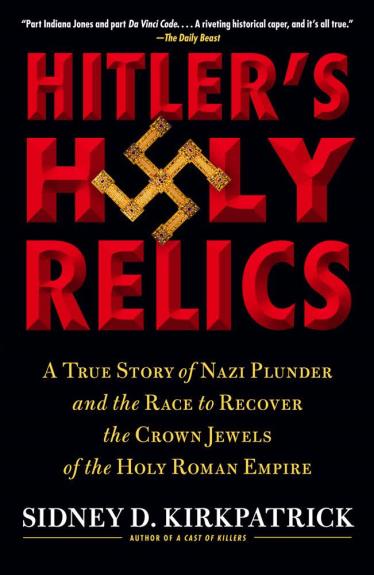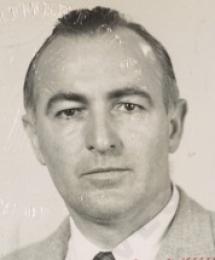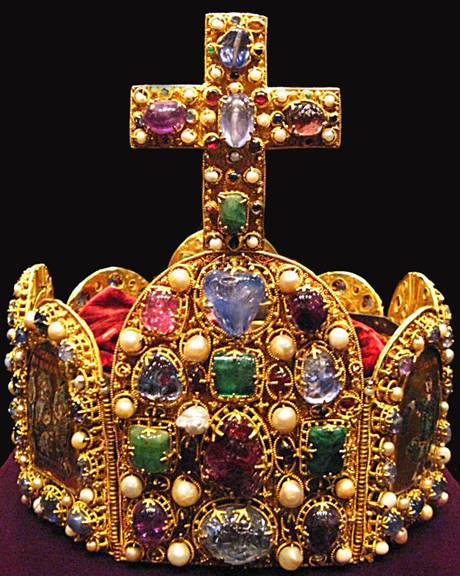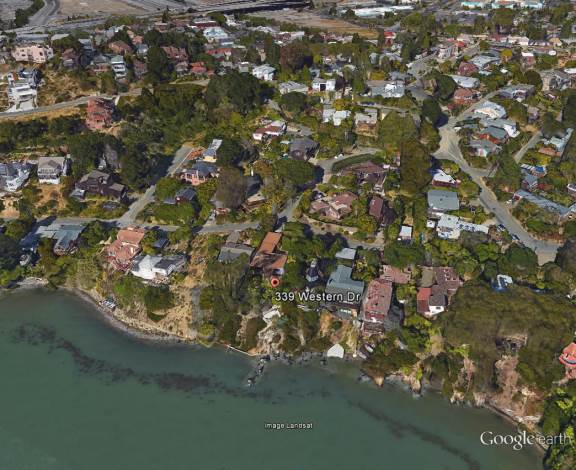|
| I don’t recall ever writing a book report previously for the E-FORUM, so this is probably a first. Every day, I discover remarkable things about Richmond history, but this is one of the best.

Later this week, January 18, will be the 108th anniversary of William Walter Horn’s birthday. Few people around Richmond recognize that name, other than a handful of Horn’s aging former Point Richmond neighbors, but the book, Hitler’s Holy Relics, by Sidney D. Kirkpatrick(2011) describes the WWII adventures of a Richmond man whose exploits are truly stranger than fiction. Due to official records that were classified for decades after WWII and military/political spin at the time, the individual exploits of Horn and others were not well known, and the first books on the subject have come out nearly 70 years later.
Those who saw the film Monuments Men or read the book The Monuments Men: Allied Heroes, Nazi Thieves and the Greatest Treasure Hunt in History by Robert M. Edsel and Bret Witter (2009) understand the gist of the story, a group of soldiers assigned to the Monuments, Fine Arts, and Archives program who are given the task of finding and saving pieces of art and other culturally important items before their destruction or theft by the Nazis during World War II.
The book I just put down, Hitler’s Holy Relics, by Sidney D. Kirkpatrick, describes in riveting detail how Walter Horn, a Point Richmond resident and “Monuments Man” personally tracked down and liberated the crown jewels of the Holy Roman Empire. Unlike the trove of stolen art sequestered mainly in Germany and Austria by the Nazis, the 1,000 year-old treasures of the Holy Roman Empire held deep mystical and symbolic meaning for Nazi leaders, including, most importantly, Hitler himself. Horn discovered that the Crown Jewels and associated military, religious and power-related artifacts were thought to impart supernatural powers and were intended to help rally a rebellion that would eventually become the 4th Reich. Because of the importance of his mission, Horn’s orders came directly from General Eisenhower.
Kirkpatrick’s book reads like an novel but is based on exacting research. The depth of the story that is intermeshed with 2,000 years of history of western civilization art, religion and politics is extraordinary. Although people who knew Horn in his later years saw him as a quiet and deeply respected professor and researcher, he clearly lived his more youthful years as an adventurer without compare.
As a German immigrant, Horn moved to California in 1939 and to Point Richmond where bought a lot in 1940 and built a home beginning in in 1942. Except for military duty during WWII, Horn lived in Point Richmond the rest of his life until he died in 1995 at the age of 87. I would put Horn’s place in history up against anyone who ever lived in Richmond.
On October 22, 2015, all 345 of the Monuments Men (and Women) were honored with the Congressional Gold Medal.

House Speaker John Boehner of Ohio, left, presents the Congressional Gold Medal to Monuments Men Harry Ettlinger, Richard Barancik, Thursday, Oct. 22, 2015, during a ceremony in Emancipation Hall on Capitol Hill in Washington. From left are, Boehner, Ettlinger, Barancik, Senate Majority Leader Mitch McConnell of Ky., and Motoko Fujishiro Huthwaite. The award is Congress' highest honor of appreciation for distinguished achievement. (AP Photo/Alex Brandon)
Scholar of medieval architecture, Walter William Horn was born in Waldangelloch, Germany on January 18, 1908. He studied the history of art and architecture at the Universities of Heidelberg and Berlin before completing a Ph.D. from the University of Hamburg in 1937. He wrote his dissertation on the façade of the church of St. Gilles in France under the supervision of renowned art historian, Erwin Panofsky. During his graduate studies, Horn worked as a research associate at the Kunsthistorisches Institut in Florence, Italy.
Horn fled Germany and the Nazis in 1938, bound for the United States.He began lecturing at the University of California, Berkeley in 1939; an appointment as assistant professor followed in 1940.In July 1944, less than a year after becoming an American citizen, Horn was inducted into the U.S. Army. He served first with General George S. Patton’s U.S. Third Army, and later as an Intelligence Officer at U.S. Third Army Intelligence Center.

Horn’s background in art, combined with his fluency in German, French, and Italian, made him an ideal candidate for service with the MFAA. After the German surrender, he became an art-intelligence officer for the MFAA Section of the Office of Military Government, U.S. Zone (OMGUS). He interrogated German prisoners of war and Nazi officials regarding the location of looted works of art and other cultural objects. In July 1945 he was assigned temporary duty in Nuremberg to investigate the missing Holy Roman regalia. The priceless collection included the Imperial Crown of the Holy Roman Empire, two swords, a scepter, and the Imperial globe. Through much investigation and the skillful interrogation of Dr. Friese, assistant to the mayor of Nuremberg, Horn tracked the regalia to its hiding place in secret tunnels deep below the city of Nuremberg. He discovered that the regalia had been hidden by the mayor of Nuremberg to serve as a rallying symbol for a future Nazi resistance movement.

As a special intelligence officer, Horn recovered the "crown of Charlemagne", part of the Imperial Regalia hidden by the Nazis
Horn was discharged in November 1946 and returned to the University of California, Berkeley. In 1948 he became the first Professor of Art History in the University of California system. For the next twenty-seven years, he significantly expanded the History of Art department at Berkeley and managed the University Art Museum (today, the Berkeley Art Museum and Pacific Rim Archive). In addition to his lectures, he published articles on numerous topics pertaining to medieval architecture, including Cistercian buildings in England and France, Romanesque stone structures, and Carolingian monasteries and cloisters. His three-volume book, The Plan of St. Gall (1979), won prestigious awards from the Académie d’Architecture in France and the American Institute of Architects. He retired as Professor Emeritus in 1975.
Horn was a fellow of the Medieval Academy of America and the American Academy of Arts and Sciences, and served on the Board of Trustees of the Fine Arts Museums of San Francisco. Walter Horn died of pneumonia on December 26, 1995 in Point Richmond, California. (http://www.monumentsmenfoundation.org/the-heroes/the-monuments-men/horn-lt.-walter-w.)
The Horn Point Richmond Residence

Walter Horn’s former home is located at 339 Western Drive Point Richmond in a neighborhood that was popular with Cal professors in the 1930s. It was designed by Born, Ernest, Architect (firm); Chermayeff, Serge, Architect (firm); Eckbo, Garrett, Landscape Architect (firm); Ernest Alexander Born (architect); Serge Ivan Chermayeff (architect) and Garrett N. Eckbo (landscape architect) over the years 1942-49.
The Russian emigre architect, Serge Chermayeff (1900-1996) worked in the Bay Area in 1940-1941 lecturing at the California School of Fine Arts in San Francisco, CA, and briefly collaborating with the Piedmont, CA, architect Clarence W.W. Mayhew (1906-1994) at this time. He became acquainted with faculty of the University of California, including Walter Horn (1908-1995) and Ernest Born (1898-1992). The trio created an initial plan for the Horn Residence before World War II; construction contracts were signed the week of 12/14/1941, but the war delayed actual construction. Horn was a Professor of Architectural History at the University of California, Berkeley, his specialty, medieval architecture; he worked with Born, to write the milestone study of the Swiss Benedictine abbey, Abbaye de Saint Gall, called The Plan of St. Gall in Brief, (Berkeley: University of California Press, 1982). Previously, Born and Horn also collaborated on The Barns of the Abbey of Beaulieu at Its Granges of Great Coxwell and Beaulieu St. Leonard, (Berkeley: University of California Press, 1965). He lived here with his wife, Alberta West Parker, and their three children.
A number of University of California Berkeley faculty lived in the neighborhood of Point Richmond, particularly on waterfront property along Western Drive. These included Professor of Slavic Languages Alexander Kaun (1889-1944), 112 Western Drive, Professor of Landscape Architecture H. Leland Vaughan (1905-1974), 311 Western Drive, and Professor of French Language and Literature, Mathurin Dondo (1884-1968), 215 Western Drive. The Horn House was located on a steep hill, with the house projecting out over the down slope. Posts that tapered elegantly from top to bottom supported the projection. The lot in 2011 contained 6,500 square feet. At this time, the residence had 1,476 square feet with 4 bedrooms and 3 baths. The original portion of the house was a polygon, with north and south sides glazed. The prime views of Marin County and the Golden Gate were to the southwest, and the living room, study and bedroom shared this perspective. (The house also had a view of the Chevron oil storage tanks nearby.) A small kitchen placed originally in the northeast corner. Landscape architect Garrett Eckbo configured a terrace sheltered from the area's strong winds lay on the north side of living room. Another sheltered outdoor living area was placed below the living room on the southwest corner of the lot. The windward side of the house, prone to squalls and wind, had a stout, metal frame covered in weather-resistant stucco, while the architects clad the rest of the dwelling in flush redwood boards over wood framing.
Alberta Horn
Born and Chermayeff designed the house to added onto incrementally; alterations occurred to the house in 1951 and 1954. Born supervised construction of an bedroom wing extending north toward Western Drive. While Chermayeff worked with Born on the initial design, it does not appear that he had a hand in later alterations, as he was working at universities in Chicago and the East Coast in the 1950s.( http://pcad.lib.washington.edu/building/10841/).
Alberta Parker Horn 1917-2012 Alberta Parker Horn (Dr. Alberta Parker), age 94, died in comfort and surrounded by love at Park Lane Senior Living in Salt Lake City on January 30 of natural causes. Alberta graduated from Kern County Union High School, Bakersfield, CA in 1934 and University of California, Berkeley in 1938. She attended medical school at UC San Francisco, where she graduated in 1941. Dr. Parker established a pediatric practice in Berkeley, CA in the late 1940s.
During the 1950s her career focus shifted to public health. She was director of maternal and child health for Berkeley public schools and assistant health officer for Berkeley's health department. She was appointed Clinical Professor of Public Health at UC Berkeley in July 1969 and was an educator at UC Berkeley until she retired in 1976. During President Johnson's War on Poverty, Dr. Parker served as consultant to the newly formed Office of Economic Opportunity, where she assisted with formation and early operation of community-based neighborhood health centers throughout the United States. Dr. Parker's monograph A Team Approach to Primary Care was published in 1972, with a focus on cooperation among physicians, nurse practitioners, and registered nurses within an integrated delivery framework.
Alberta is preceded in death by her husband of 46 years, whom she married in 1949 and who died in 1995. She is also preceded in death by her son Peter and her sister Genevieve Parker. She is survived by brother James Parker of Murraysville, PA; daughter Rebecca of Salt Lake City and her husband Stanley Holmes; son Michael of Chicago and partner Kenneth Ochsenhofer; daughter-in-law Teri Horn of San Anselmo; and by two grandchildren, Matthew Horn and Dulce Maria Horn. Alberta was passionate in her interest in the world. She was an avid "collector", with eclectic tastes ranging from early California painting, to Eskimo sculpture, as well as art pottery. She enjoyed simple pleasures such as hiking and sightseeing in car trips, and even picking up interesting rocks and pine cones at the side of the road. The family held a visitation in Salt Lake City for immediate family and loving caregivers. A celebration in honor of Alberta's life will be held in her California home on Sunday May 27 at 2:00 p.m. (773) 525-0942. Donations can be made to the Walter Horn Scholarship Fund, UC Berkeley History of Art Department, 416 Doe Library 6020, Berkeley 94720.
Published in San Francisco Chronicle on Mar. 31, 2012 - See more at: http://www.legacy.com/obituaries/sfgate/obituary.aspx?n=alberta-horn&pid=156776720#sthash.sNTqJsZU.dpuf
|
|

